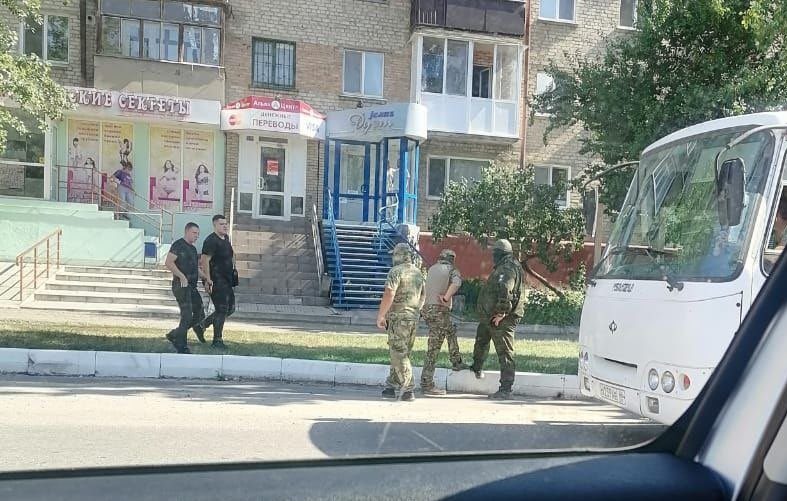Forced conscription: how Russia wipes out the male population of occupied DonbasIn June-July, Russia's mobilization wasn't entirely put to a halt but its intensity subsided significantly. The remaining Donbas men, many of whom were hiding at home throughout the entire spring, started coming out to the streets more often. Then, locals of the occupied cities reported large irregular raids to round up men in a specific neighborhood:
Донецк
— hochu dodomu v UA (@hochu_dodomu) June 25, 2022
Маяк, Цум - ловля " мобиков" pic.twitter.com/HMIiBcM7H3
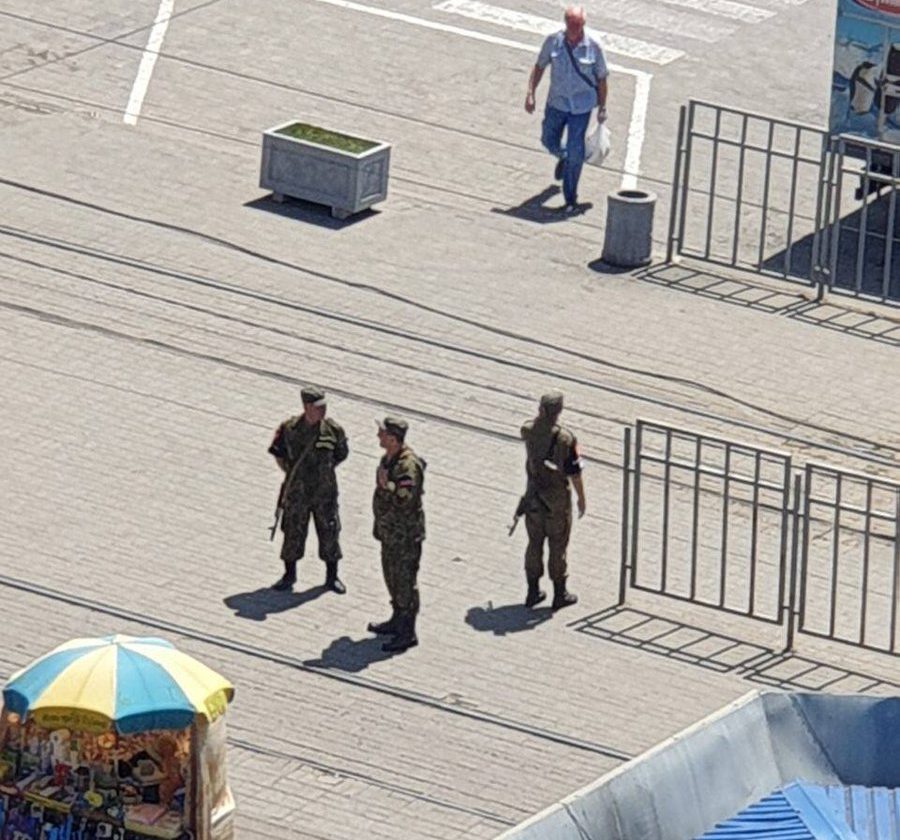
Russia's August wave of forced mobilization in Donbas
In early August, multiple local reports emerged on renewed systematic efforts to mobilize the Donbas men en masse:- the "state-owned enterprises" giving exemptions for military service started receiving mobilization quotas;
- many more mobilization patrols emerged in the streets of the occupied cities and towns;
- the "mobilizers" were said to get more creative in their attempts to force local men to fight against Ukraine - the patrols started raiding courtyards and homes in the evening and at night, ambushing the hiding men.
"According to available information, about 80 men have already been sent to the front this week in Starobilsk alone. They replenish the personnel of assault groups, which have been neutralized by the Ukrainian Armed Forces on a regular basis," he wrote on 4 August.According to one of the reports on local Telegram channels, the mobilization in Luhansk was carried out in a more organized manner than before: Russian military conscription officers started working with HR departments of local enterprises.
"They were inviting employees of personnel departments to the military commissariat instructing those to bring the lists of working men aged 18 to 55, and obliged those to hand over ten 'volunteers' on the next day, otherwise they threatened to issue draft notices to all the men of the enterprises."A similar situation was in other occupied cities of Luhansk Oblast. For example, in Kadiivka (formerly Stakhanov), Luhansk Oblast, it became known on 7 August that all the exemption certificates became void and all local enterprises using hired labor were obliged to provide the military commissariat with lists of working men. According to the human rights group Zmina, the Alchevsk metallurgical plant (AMK) received an order to lay off 1,700 men for mobilization. It was already the fourth and largest wave of mobilization at the enterprise - previous mobilization quotas the enterprise had received obliged AMK to send 1,000, 500, and then 400 of its workers for mobilization. In his interview with Apostrof TV published on 12 August, Andrii Usov, representative of the press service of Ukraine's Main Directorate of Intelligence (HUR) said that his agency had information that Luhansk had seen a meeting of the occupation administration with representatives of local enterprises, where the occupation authorities informed that 8,000 men aged under 60 were to be mobilized in Luhansk oblast alone then.
"This is done to replenish the losses, to restore the fighting capabilities of the units. First of all, we are talking about the so-called 2nd Army Corps (a Russian colonial army formed in the occupied Luhansk Oblast - Ed.). So yes, it's cannon fodder. From the very beginning, residents of ORDLO (parts of Luhansk and Donetsk oblasts occupied since 2014, - Ed.) - even those having Russian passports - have been used as cannon fodder for 'reconnaissance by combat.' Badly trained and with bad ammunition, they were thrown into difficult areas of the front. Instead, they treat Russians in a completely different way," Usov told Apostrof TV.
"Luhansk has been almost deserted. The roundups of men, whom the Russians send to death, continue on the streets. Only women remain on the streets," he wrote:
Луганск практически вымер. На улицах продолжаются облавы на мужчин, которых россияне отправляют на смерть. На улицах остались только женщины pic.twitter.com/ixQLiu9Aqd
— Денис Казанський (@den_kazansky) August 8, 2022
"In Perevalsk they sit near the staircase entrance at night and wait for someone to go in or out - they already caught three people in this way in one night."A Donetsk resident wrote,
"My classmate was pulled out of his house and sent to be slaughtered. Died. The second was taken from a coal mine, he's still alive."
Оккупированный Луганск
— східний (@samotniyskhid) August 6, 2022
"Кв. мирный, подошли два военных к парню, он показал паспорт и какую-то бумажку, предположительно справку, после чего военный отдал бумажку назад парню, а паспорт оставил у себя, далее повели в сторону абсолюта. Военных машин возле абсолюта видно не было" pic.twitter.com/mbZExa2k6J
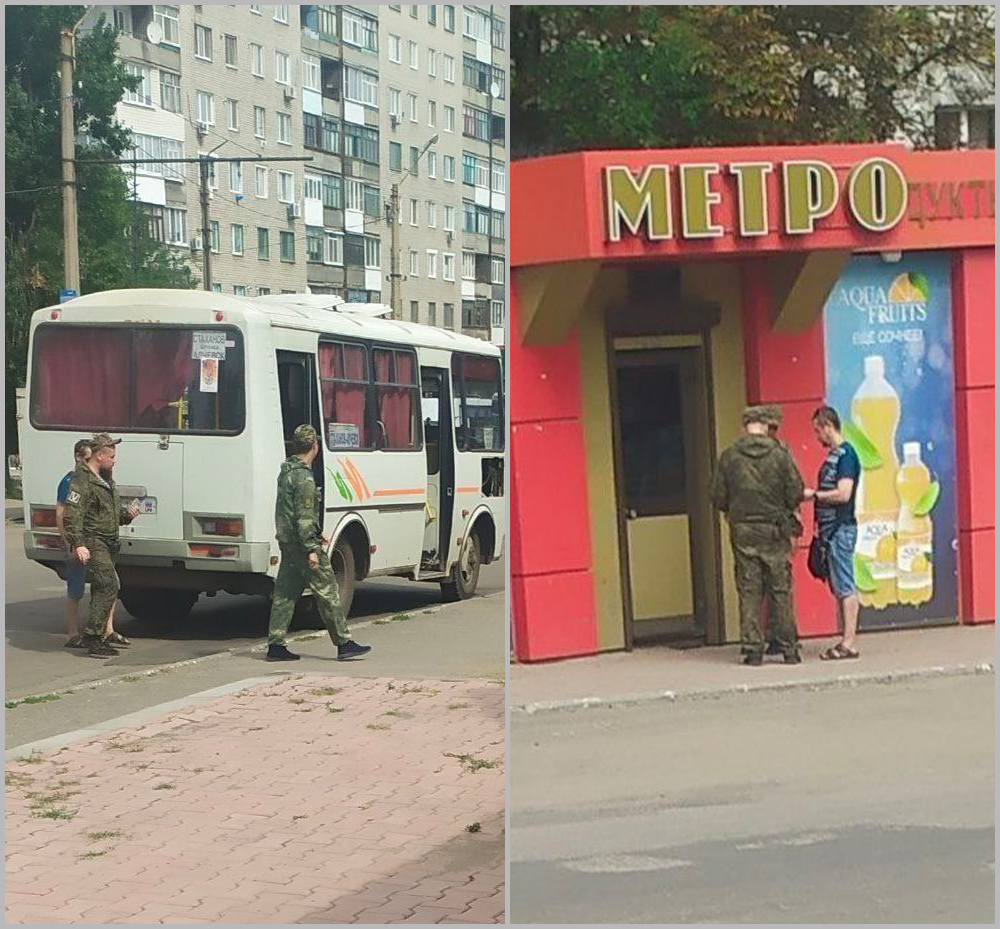
"Occupied Krasny Luch (Khrustalnyi), Luhansk Oblast. Russian invaders set up ambushes in the one-family home neighborhood just in the bushes, especially at night. They sit 'till final victory,' looking closely at the activities in the households," Skhidnyi wrote, adding that "The denunciation system is well-developed based on the principle 'They took mine, let yours go too. If they die, let them all die together.' The conscription officers in balaclavas are Russians, they behave extremely aggressively and exhibit unjustified cruelty. In the 'mobik-buses' (buses to transport the captured mobilizees, - Ed.) they are taking physical 'prophylactic measures' against draft dodgers (i.e. they are beating them, - Ed.)."
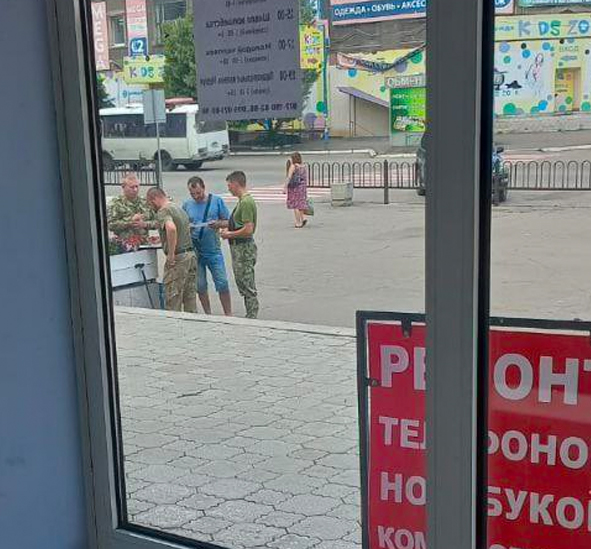
"A couple days ago, enlistment officers came to another address to mobilize a man living there, yet his wife opened the door and said, 'He doesn't live here anymore, he was mobilized in February, perished in April'."
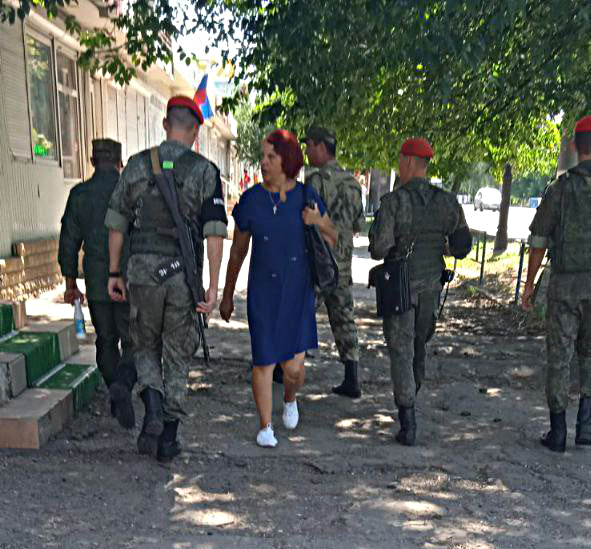
"There are strict orders to fulfill the [mobilization] plan, they're using a variety of methods for that. As going around the courtyards is already considered the norm, the night ambushes at the house entrances are something new. They also try to use ruses, involve neighbors, utility services, etc.," Skhidnyi reported. "In addition to personnel, the occupiers are also very interested in vehicles from civilian passenger cars to trucks owned by various enterprises and firms. The service exemptions of the last workers in various fields, including drivers of logistics companies, utilities, etc are getting massively revoked," he added. "The impression is that the task is not just to gather the required amount of cannon fodder, but also to completely get rid of the male population of the region," Skhidnyi believes.
В Луганске мужчина пришёл за ребёнком в садик - его скрутили и забрали орки.
— hochu dodomu v UA (@hochu_dodomu) August 17, 2022
Сразу видно.. как хочет умирать за луганду и руский мир pic.twitter.com/usazxDQz3b
"People with 'armor' (a slang term for military service exemption, - Ed.) plainly don't get to work [as they get captured]. An acquaintance of mine went outside his courtyard and they took him away literally in slippers, not letting him even to get home [to change boots]. Another six months of such developments and no men will remain, only 16-year-old kids."Gulli_ver's August 11 report from Snizhne reads,
"They chaotically drive a bus down the central streets and near the coalmines. This morning, they 'raked out' everyone they could from the Shakhtar [trade center]. There haven't enough people..., as our military commissar says, and his advice also is for those who are hiding somewhere not to go out even into the yard."This footage from Luhansk dated 11 August shows a patrol catching local men on one of the city's central streets:
On the same day, an anonymous Kadiivka resident living under the Russian occupation wrote:В Луганске без изменений, все возмущаются по
— hochu dodomu v UA (@hochu_dodomu) August 12, 2022
поводу ”могилизации ”, но только в чатах .. где админы усердно быстро трут "крамолу" pic.twitter.com/Qtpv3xYfLL
"In Stakhanov (Kadiivka, - Ed.), there's still the same hunt for men: the other day, those who were looking for job were summoned to the employment center, and received 20 draft notices."A woman living in occupied Donetsk reported,
"They take 'for cannon fodder' even 60-year-olds if you happen to go buy bread without documents. The boss of the 'DNR' water company stripped the undesirable employees of exemptions: one was buried lately, the other is in the hospital with wounds. At the DMZ [plant], the flow of the 200s (killed in action, - Ed.) goes starting from 24-year-olds to [older workers]... A genocide."Anti-Ukrainian Russian "military blogger" Andrei Morozov mentioned two telling cases of the mobilization in his 11 August blog post:
"...In the LNR ('Luhansk people's republic,' - Ed), they began to draft ambulance drivers into the army. The cost of the [exemption] skyrocketed to 100,000 rubles ($1,600, - Ed.). In the DNR ('Donetsk people's republic,' - Ed.), one and a half dozen 'replenishment' people were sent to one of the units, of which only two were combat-fit for the infantry in terms of health. TWO. Some of those sent were convalescents, still with 'pins' in their wounded limbs (the so-called Ilizarov apparatus used for external fixation of broken bones, - Ed.). The 'recruiters' took one of those from the mental asylum, which quickly became clear and he was sent back..."
Legal side of Russia's forced mobilization in Donbas
Forced mobilization is explicitly prohibited by the 1949 Geneva Convention for the Protection of Civilian Population in Time of War. Under Article 51 of the Convention, the Occupying Power shall not compel protected persons to serve in its armed or auxiliary forces or to perform any work involving their participation in military operations. The human rights center Zmina notes that the ban on forcing citizens of the opposing party to take part in hostilities against their own state is also enshrined in Article 23 of the 1907 Hague Regulation. Also, such actions are a violation of the laws and customs of war, according to Article 438 of the Criminal Code of Ukraine."In the context of forced mobilization as a war crime, the facts of declaring general mobilization, establishing criminal responsibility for evading it, and restricting the departure of conscripts from the occupied territories are sufficient to prove coercion," Zmina says.At the same time, those men who voluntarily joined the ranks of the Russian armed formations can be tried in Ukraine for treason under Ukraine's national legislation.
"In order to establish whether a person who has been forcibly mobilized is subject to criminal liability, it is worth assessing his actions after his forced enlistment in the occupation armed forces. At the same time, it is also necessary to take into account all the circumstances of the case and the facts of coercion regarding the commission of specific acts," Zmina notes.Unfortunately, there are incidents when Ukrainian citizens who were forcibly mobilized in occupied Donbas and taken as POWs are charged with treason. This is despite Ukraine issuing recommendations to surrender to its citizens who were forcibly enlisted in the occupiers' army. Commenting on the reasons for Russia's activation of the ongoing mobilization in ORDLO, Ukraine's Main Intelligence Directorate representative Andrii Usov noted,
"Large losses of personnel of the 2nd Army Corps and the occupation army in Ukraine as a whole [is the reason]. These losses must be replenished with something. The mobilization campaign on the territory of Russia proper is unsatisfactory. It is also unsatisfactory in occupied Crimea. That is, the plans are not fulfilled. The only place where they can quickly, without any fear, without any regard for public opinion, replenish the personnel with manpower is, in fact, ORDLO. There are no civil rights and freedoms there, no laws apply there. Therefore, the most brutal mobilization campaign takes place there."
"It's not even mobilization, it's just slavery. They literally send people to slaughter. This is genocide," Usov said.
Read also:
- Russian occupiers started new mobilization wave in Donbas
- Forced conscription: how Russia wipes out the male population of occupied Donbas
- “LDNR” mobilization designed to sow panic, cover possible engagement of Russian regulars: Opinion
- 27,000 forced to attend “mobilization assembly” in occupied Donetsk Oblast (2017)

